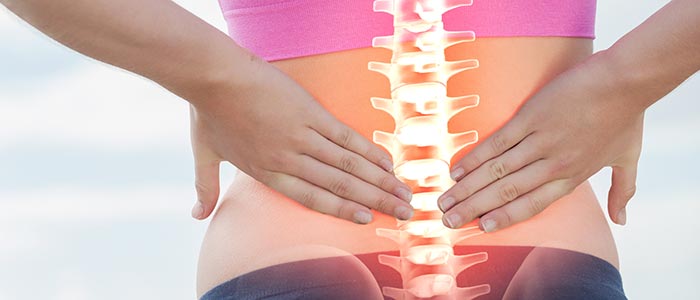Sacroiliac SI Joint Dysfunction in Portland OR

I always tell people that the sacroiliac joints in Portland OR are the "foundation of the foundation." They are the joints comprised of the joining of your tailbone and your large pelvic bone. Whether you're standing or sitting, they are always having to support your weight. They are the two largest synovial joints in your body. They expand when you are getting ready to give birth or in the act itself. A traumatic sprain of this joint can lead to lifelong instability and disability.
How Sacroiliac SI Joint Dysfunction Causes Low Back Pain in Denver CO
In my experience, they are the primary source of low back problems. This is not an insignificant statement, as low back pain is the number two reason people visit their doctor after the common cold. By mechanical problems in and around this joint are extremely common and can be persistent, recurrent, and severe. As that joint goes, so goes the lumbar spine, lumbar discs, and hip joints, quite often. I will at least check the SI joints in 98% of every days patience.
Outdated orthopedic thought was that these joints don't move at all. Sadly, I recently saw a one page info graphic on the SI joints, obviously not produced by a chiropractor, who which perpetuated this archaic belief. In fact, there is an appreciable 5 to 10° of motion that healthy SI joints exhibit on movement and with motion palpation testing. Biomechanically or genetically truly fixated SI joints are rare and stick out like a sore thumb, or in this case, stick out like a sore thumb-sized protuberance called the PSIS. Nobody who examines, treats, or follows the course of care of sacroiliac joints on a daily basis would believe they are fixed; and this is what prompted my blog post.
When you present to your chiropractor, they will often go through a series of orthopedic tests to rule out a great number of lower back diagnoses. One of which is a leg length check. Physiologically unequal leg lengths are most often caused by bio mechanical problems at the sacroiliac joints. Conversely, true differences in leg length can cause by mechanical problems for the SI joints. If you've ever had a chiropractor line up your ankles and check for a difference, they were probably at least partially accessing your sacroiliac joint health.
There are a great number of things that can be responsible for SI problems. I have seen a great number of veterans who marched for miles with 40lbs, 60,lbs or more in equipment. Some landed dozens or hundreds of times, dangling from a parachute, and similarly overloaded in gear. Each time the foot lands, it transfers kinetic energy through these joints in a sheer-force nature. Army crawls bring the SI joints into maximal flexion and extension positions and kneeling on one knee comes fairly close. I get chronic low back pain referrals from the VA on guys who have extremely beat up and stiff SI joints, all the time.
Physical jobs, especially ones including lifting, crouching, ladder climbing, and carrying loads, are taxing on the SI's. A recent study suggested that prolong sitting at work is not likely responsible for new bouts of lower back pain, but we see flareups of low back pain in people with chronic, recurrent issues quite frequently. Ironically, soft couch and recliner seats can cause problems at the SI joints as much as hard bleacher benches, just from different physics.
Everyone's case is different, but there are a few principles about SI joint health that are a fairly universal. The joints should be balanced in the movement and in a static position. They should be well stabilized by strong local muscles. They should be in a chair that supports healthy ergonomics and with a cushion that is not too deep, but a surface that's not extremely rigid, and especially not for too long. Exercise that takes the SI joints through longer ranges in motion in a safe and stable way, like yoga, Pilates, and other core strengthening and flexibility programs is very beneficial.
The presence of pain anywhere in the lower back or hip area should make you think of possible SI problems and have you heading to your chiropractor's office, as soon as possible. SI joint problems can be very stubborn and need to be addressed as soon as possible. An assessment of your SI joints is also a very good idea if you're about to start a new exercise program or a new job. If you don't currently have a chiropractor and don't know where to turn, please don't hesitate to call the clinic number at (503) 648-4357 and I will try to find a chiropractor close to you that I know.
